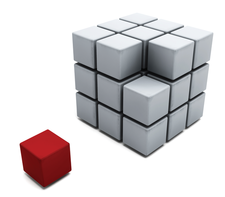Data backup for individual hosts
Going Solo

© Lead Image © Kirsty Pargeter, Fotolia.com
Sometimes you just need to back up a few directories on a computer, not administer a distributed installation or an array of disks. Areca Backup gives you hassle-free backups of individual hard drives.
Creating a safe copy of a few directories is governed by laws different from those that apply to backing up complete data centers. The tools need to be especially easy to use, without complicated configuration files or deeply nested menus. The usual space-saving techniques, such as incremental backups, should be available. Pre-and post-backup scripts should be able to stop applications like databases during the backup. Several backup versions need to be archived, and encryption and compression would not be bad.
The backup should be capable of restoring to different hardware; but, for the sake of simplicity, it would be preferable not to store the data in a proprietary format, which would necessitate reinstalling the operating system and backup software in the case of disaster. LVM or RAID configurations should not be an obstacle. File permissions need to remain intact, and the backup should not trip over links or named pipes. Finally, you should also be able to check easily whether everything went as desired.
Treat
One open source tool that satisfies all these requirements is Areca Backup [1]. Beyond the features already listed, Areca has a few more treats to offer. For example, you can include or exclude source files in or from the backup and filter by various criteria. Constructs with AND, OR, and NOT are allowed. Backups can be simulated, so that you can estimate in advance what would reach the backup disk, and to what extent, with the given settings.
[...]
Buy this article as PDF
(incl. VAT)
Buy Linux Magazine
Subscribe to our Linux Newsletters
Find Linux and Open Source Jobs
Subscribe to our ADMIN Newsletters
Support Our Work
Linux Magazine content is made possible with support from readers like you. Please consider contributing when you’ve found an article to be beneficial.

News
-
AerynOS Alpha Release Available
With a choice of several desktop environments, AerynOS 2025.08 is almost ready to be your next operating system.
-
AUR Repository Still Under DDoS Attack
Arch User Repository continues to be under a DDoS attack that has been going on for more than two weeks.
-
RingReaper Malware Poses Danger to Linux Systems
A new kind of malware exploits modern Linux kernels for I/O operations.
-
Happy Birthday, Linux
On August 25, Linux officially turns 34.
-
VirtualBox 7.2 Has Arrived
With early support for Linux kernel 6.17 and other new additions, VirtualBox 7.2 is a must-update for users.
-
Linux Mint 22.2 Beta Available for Testing
Some interesting new additions and improvements are coming to Linux Mint. Check out the Linux Mint 22.2 Beta to give it a test run.
-
Debian 13.0 Officially Released
After two years of development, the latest iteration of Debian is now available with plenty of under-the-hood improvements.
-
Upcoming Changes for MXLinux
MXLinux 25 has plenty in store to please all types of users.
-
A New Linux AI Assistant in Town
Newelle, a Linux AI assistant, works with different LLMs and includes document parsing and profiles.
-
Linux Kernel 6.16 Released with Minor Fixes
The latest Linux kernel doesn't really include any big-ticket features, just a lot of lines of code.

